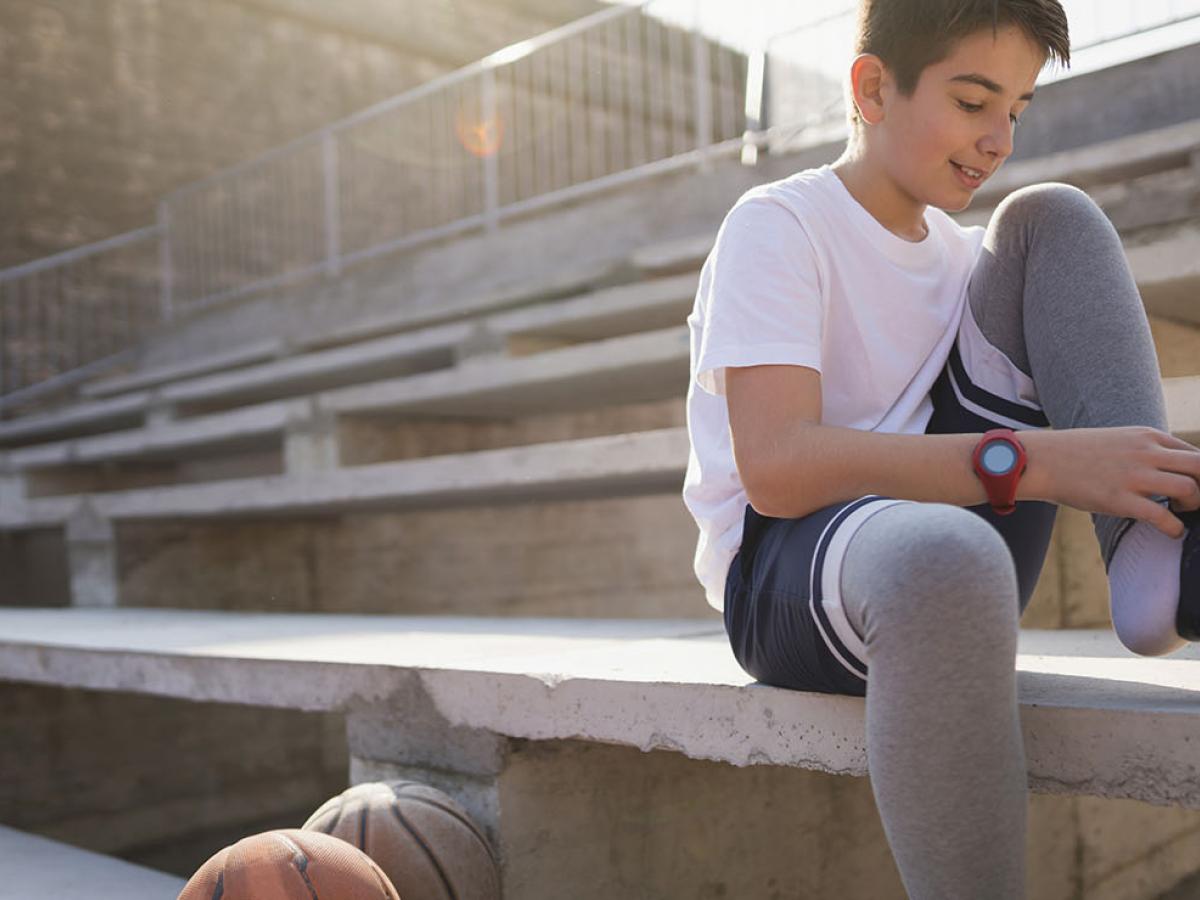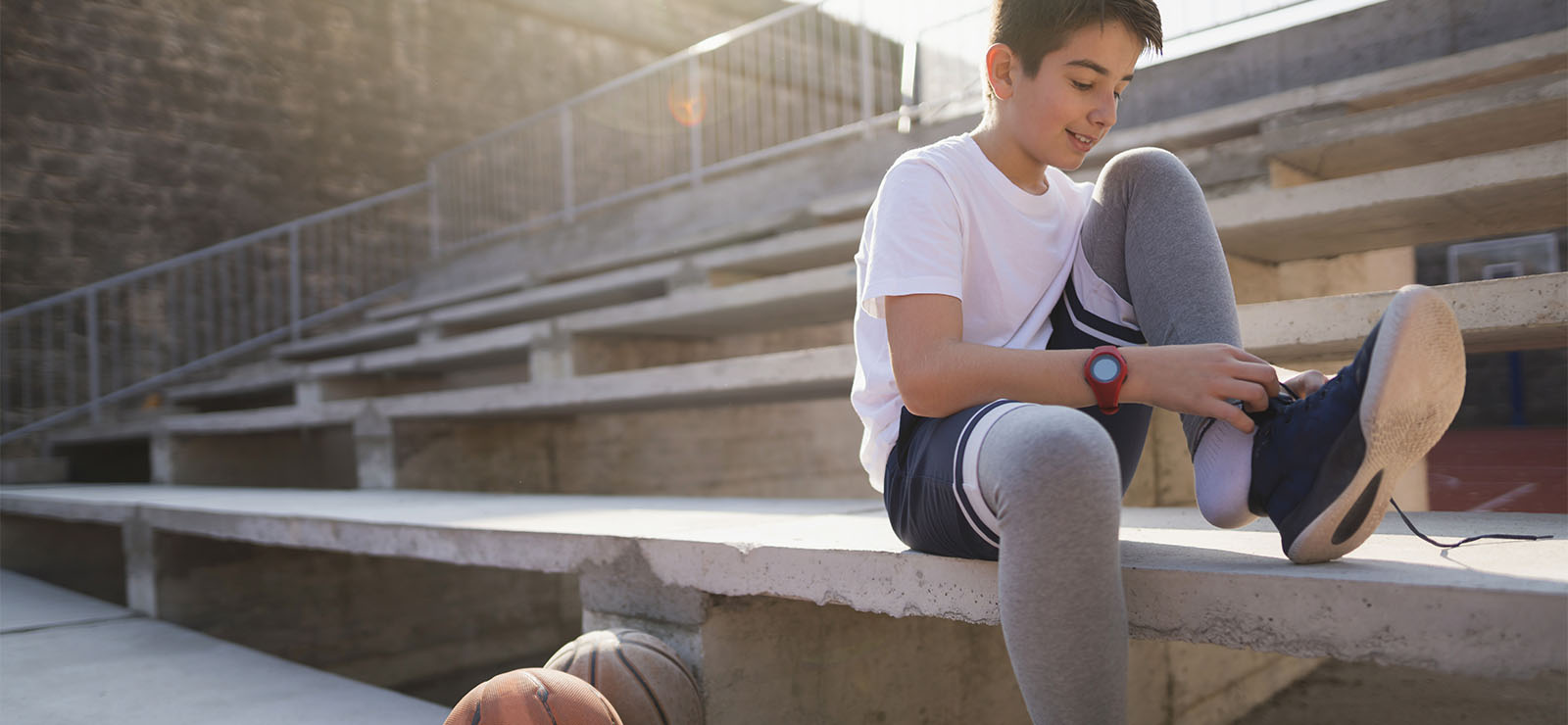September 23, 2024

Playing sports can help kids gain confidence, learn about teamwork and stay fit. But it can also increase their risk for injury, especially for tweens and teens. Once athletes reach adolescence, things can get more competitive and physical.

While there’s no way to completely avoid injury as an athlete, there are ways to reduce the risk, according to MU Health Care sports medicine doctor Clayton Nuelle, MD. And most of that preventive action takes place off the field.
“What athletes do when they’re not at practices and games is often just as important as what they do while playing,” Dr. Nuelle says. “Parents play a critical role in guiding their teens and teaching them how to care for their bodies to avoid getting hurt.”
Dr. Nuelle walks us through what you can do to reduce the risk of sports-related injuries in teens and tweens:
1. Allow Ramp-Up Time for a New Season or Sport
Every time you start a new sport or season, the risk of injury is high. According to Dr. Nuelle, most sports injuries occur in August and September — after a summer hiatus from sports.
“Even if kids are active in summer, they may not be playing as much or as often as they do in-season,” Dr. Nuelle says. “They also may not be playing with as much intensity.”
Staying active throughout the year and playing various sports helps because the body and joints get a variety of movement. Before any new sport or season, make sure your young athlete gets into the rhythm of that sport slowly by conditioning and playing at home before tryouts or practices start.
2. Know How to Hydrate Properly for Sports
As a parent, you probably ask about water as your child walks out the door to practice or a game. But how much are they hydrating before and after they play?
Every hour your child competes, they can lose up to two quarts of fluid — more for distance running and intense activity. Hydration helps joints move better, makes breathing easier and supports muscle function.
Dr. Nuelle also explains that drinking plain water may not be enough. Teens playing competitive sports need electrolytes to replace the salt and other minerals lost during sweating and performance. They can get these essentials through sports drinks or by adding electrolyte packets to water.
“Cramping occurs because of depleted electrolytes and dehydration,” Dr. Nuelle says. “The best thing to do is hydrate with electrolytes before and after you play and drink plenty of water during the competition or practice.”
3. Eat Like an Athlete
Food is fuel for our bodies, and athletes are like race cars. They burn fuel differently, and getting the right fuel impacts their performance and safety.
“If a sport requires weightlifting or a lot of running, it breaks down more muscle, faster,” Dr. Nuelle says. “A healthy amount of both protein and carbohydrates can help support that muscle.”
While poor nutrition may not directly cause injury, it can lead to conditions that do. Fatigue and mineral deficiencies can affect performance and increase the risk of getting hurt. Make sure your child eats well-rounded meals and enough calories to prevent injury and help muscles recover.
4. Prioritize Sleep
Experts know that getting enough quality sleep is vital for athletic performance. But sleep can also help prevent injuries.
“It’s a downstream effect,” Dr. Nuelle says. “When you sleep less, your performance is not as strong, and your muscles get fatigued more easily. That makes them more prone to injury.”
Research shows that athletes who regularly sleep eight or more hours a night are 68% less likely to get injured when playing sports. But Dr. Nuelle cautions that it’s not just about being in your bed for eight or more hours.
“There has to be a consistent and calming environment that will help them sleep well and sleep through the night,” he says. “Athletes need the correct quantity and quality of sleep to completely restore their body.”
5. Avoid Overuse Injuries
Dr. Nuelle says that the beginning of a new sports season isn’t the only time experts see a rise in injuries. They also see an uptick in overuse injuries at the season’s peak stemming from joint and muscle overuse.
“It’s a delicate balance between training so you can compete in games without overtraining or overusing certain joints or extremities,” he says, adding that youth athletes shouldn’t be spending more than 18 to 20 hours a week on any one sport.
Overuse can also cause injuries to growth plates — softer areas of bone growth. Sports like baseball and gymnastics are more prone to growth plate injuries because the same growth plates are continually stressed from repeated movements.
“If athletes have significant pain, they need to evaluate the volume of certain activities and how they perform those activities,” Dr. Nuelle says. Consulting with a sports medicine doctor may offer guidance specific to athletes. Some sports medicine clinics and programs, like the ones at MU Health Care, offer throwing and running evaluations to check athletes’ mechanics and ensure they are ready to return to play.
6. Pay Attention to Pain
Competitive sports require toughness, but an approach of “walk it off” or “no pain, no gain” isn’t always the answer.
“If an athlete has significant pain and swelling, it shouldn’t be ignored,” Dr. Nuelle says. “You may need an evaluation to ensure that playing on it won’t worsen it.”
If your athlete complains about pain after a practice or game, knowing whether the issue is an injury or muscle soreness can be challenging. Dr. Nuelle says there are a couple of ways to tell:
- Injury pain is usually sharp and intense. It may not go away and may be associated with swelling or difficulty bearing weight on the injured area.
- Pain from soreness involves short bursts of discomfort or generalized aching after an event or workout. It often follows new activities or an intense workout and feels better by the next day or two.
7. Fully Recover From Injuries Before Returning to Play
If your teen sustains an injury, they should regain full strength and range of motion before returning to play. Dr. Nuelle says there are two reasons that full recovery is essential:
- Reinjury: If the injured area is not fully back to full strength, you could make the initial injury worse.
- New injury: If there hasn’t been a full recovery, it’s natural to compensate by stressing another joint or extremity. The added stress increases the likelihood of a new injury.
Everyone wants to know how quickly they can get back, Dr. Nuelle says. But that varies depending on the injury, athlete and sport.
“Even the Mizzou athletes we treat need to be able to perform movements with little to no discomfort before we let them go back,” he says. “Playing sports comes with some risk. But it also comes with the responsibility of staying healthy and allowing yourself time to recover if injury strikes.”
Next Steps and Useful Resources
- Want to learn more? Watch our free Preventing Youth Athlete Injuries On-Demand Webinar.
- Injured despite your best efforts? Learn more about MU Health Care’s walk-in Sports Medicine Injury Clinic.
- Want to discuss more with a sports medicine expert? Find one today.
- Learn more about our sports medicine services.


